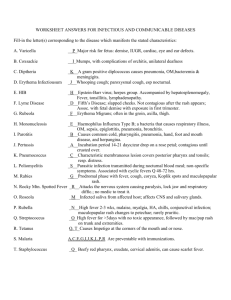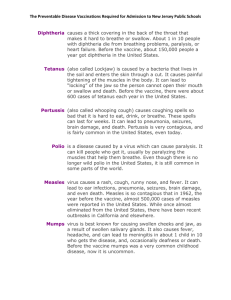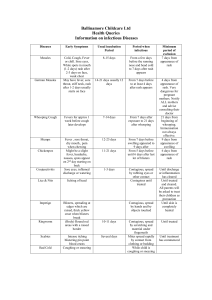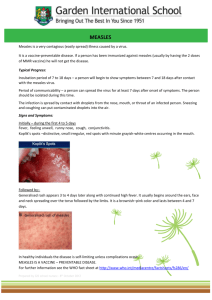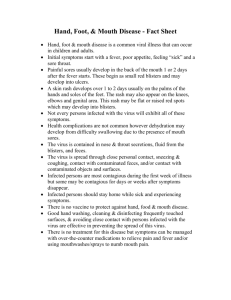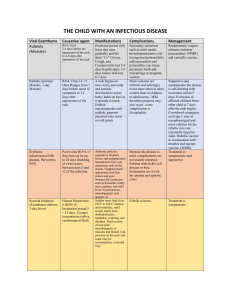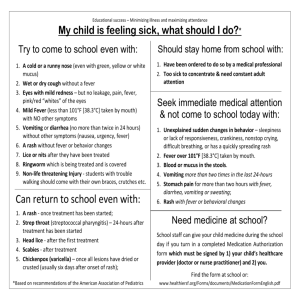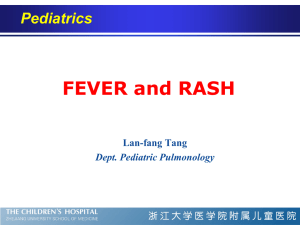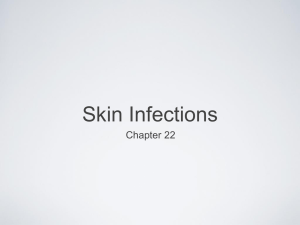Fever & Rash Infections: Measles, Rubella, & More
advertisement
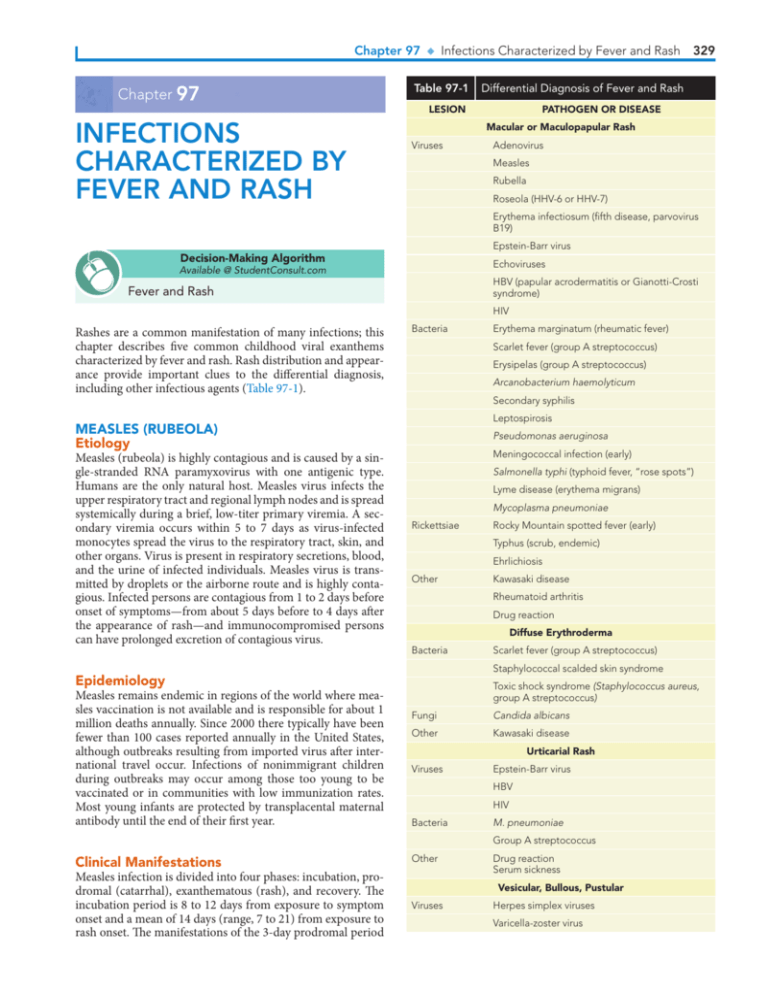
Chapter 97 u Infections Characterized by Fever and Rash 329 Chapter 97 INFECTIONS CHARACTERIZED BY FEVER AND RASH Table 97-1 Differential Diagnosis of Fever and Rash LESION PATHOGEN OR DISEASE Macular or Maculopapular Rash Viruses Adenovirus Measles Rubella Roseola (HHV-6 or HHV-7) Erythema infectiosum (fifth disease, parvovirus B19) Epstein-Barr virus Decision-Making Algorithm Echoviruses Available @ StudentConsult.com HBV (papular acrodermatitis or Gianotti-Crosti syndrome) Fever and Rash HIV Rashes are a common manifestation of many infections; this chapter describes five common childhood viral exanthems characterized by fever and rash. Rash distribution and appearance provide important clues to the differential diagnosis, including other infectious agents (Table 97-1). Bacteria Scarlet fever (group A streptococcus) Erysipelas (group A streptococcus) Arcanobacterium haemolyticum Secondary syphilis Leptospirosis MEASLES (RUBEOLA) Etiology Measles (rubeola) is highly contagious and is caused by a single-stranded RNA paramyxovirus with one antigenic type. Humans are the only natural host. Measles virus infects the upper respiratory tract and regional lymph nodes and is spread systemically during a brief, low-titer primary viremia. A secondary viremia occurs within 5 to 7 days as virus-infected monocytes spread the virus to the respiratory tract, skin, and other organs. Virus is present in respiratory secretions, blood, and the urine of infected individuals. Measles virus is transmitted by droplets or the airborne route and is highly contagious. Infected persons are contagious from 1 to 2 days before onset of symptoms—from about 5 days before to 4 days after the appearance of rash—and immunocompromised persons can have prolonged excretion of contagious virus. Pseudomonas aeruginosa Meningococcal infection (early) Salmonella typhi (typhoid fever, “rose spots”) Lyme disease (erythema migrans) Mycoplasma pneumoniae Rickettsiae Rocky Mountain spotted fever (early) Typhus (scrub, endemic) Ehrlichiosis Other Kawasaki disease Rheumatoid arthritis Drug reaction Diffuse Erythroderma Bacteria Scarlet fever (group A streptococcus) Staphylococcal scalded skin syndrome Epidemiology Measles remains endemic in regions of the world where measles vaccination is not available and is responsible for about 1 million deaths annually. Since 2000 there typically have been fewer than 100 cases reported annually in the United States, although outbreaks resulting from imported virus after international travel occur. Infections of nonimmigrant children during outbreaks may occur among those too young to be vaccinated or in communities with low immunization rates. Most young infants are protected by transplacental maternal antibody until the end of their first year. Erythema marginatum (rheumatic fever) Toxic shock syndrome (Staphylococcus aureus, group A streptococcus) Fungi Candida albicans Other Kawasaki disease Urticarial Rash Viruses Epstein-Barr virus HBV HIV Bacteria M. pneumoniae Group A streptococcus Clinical Manifestations Measles infection is divided into four phases: incubation, prodromal (catarrhal), exanthematous (rash), and recovery. The incubation period is 8 to 12 days from exposure to symptom onset and a mean of 14 days (range, 7 to 21) from exposure to rash onset. The manifestations of the 3-day prodromal period Other Drug reaction Serum sickness Vesicular, Bullous, Pustular Viruses Herpes simplex viruses Varicella-zoster virus
